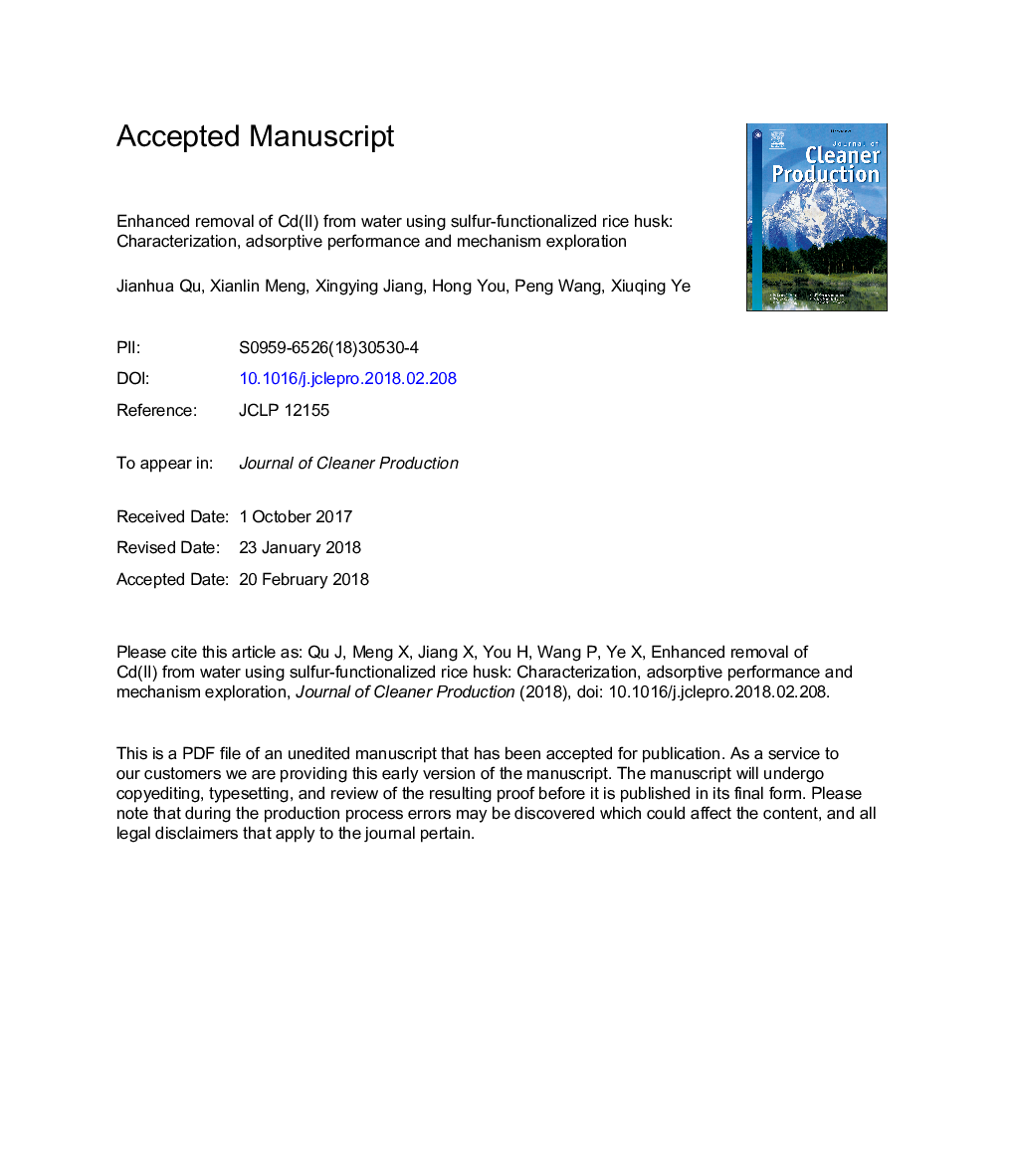| Article ID | Journal | Published Year | Pages | File Type |
|---|---|---|---|---|
| 8097171 | Journal of Cleaner Production | 2018 | 36 Pages |
Abstract
By grafting sulfur-bearing groups onto rice husk with magnesium xanthate, a novel biosorbent (RH-M) was synthesized for removal of cadmium from water. New sulfur containing binding sites were achieved efficiently according to Fourier Transform Infrared Spectroscopy and elemental analysis, and the alternation of surface morphology of RH-M was presented by Scanning Electron Microscopy. The adsorption performance of xanthate-modified biosorbent including adsorbent dosage effect, pH-dependence, kinetic curves and equilibrium isotherms were systematically investigated. The Cd(II) adsorption of RH-M was found to follow Langmuir isotherm model with maximum adsorption capacity of 137.16â¯mgâ¯gâ1, significantly higher than that of many other reported adsorbents. The high-density sulfur-bearing groups on the functionalized rice husk surface are believed to improve the cadmium uptake due to a combination of ion exchange and chelation. Moreover, RH-M exhibited fast Cd(II) uptake ability in an exceptionally high correlation with pseudo-second-order kinetic model. Besides, Desorption experiments demonstrated that 0.5â¯M HNO3 solution could effectively desorb Cd(II) from the biosorbent with recovery rate up to 75% after four consecutive cycles. All these results recommend RH-M as a promising biosorbent for cadmium removal in aqueous solution.
Keywords
Related Topics
Physical Sciences and Engineering
Energy
Renewable Energy, Sustainability and the Environment
Authors
Jianhua Qu, Xianlin Meng, Xingying Jiang, Hong You, Peng Wang, Xiuqing Ye,
